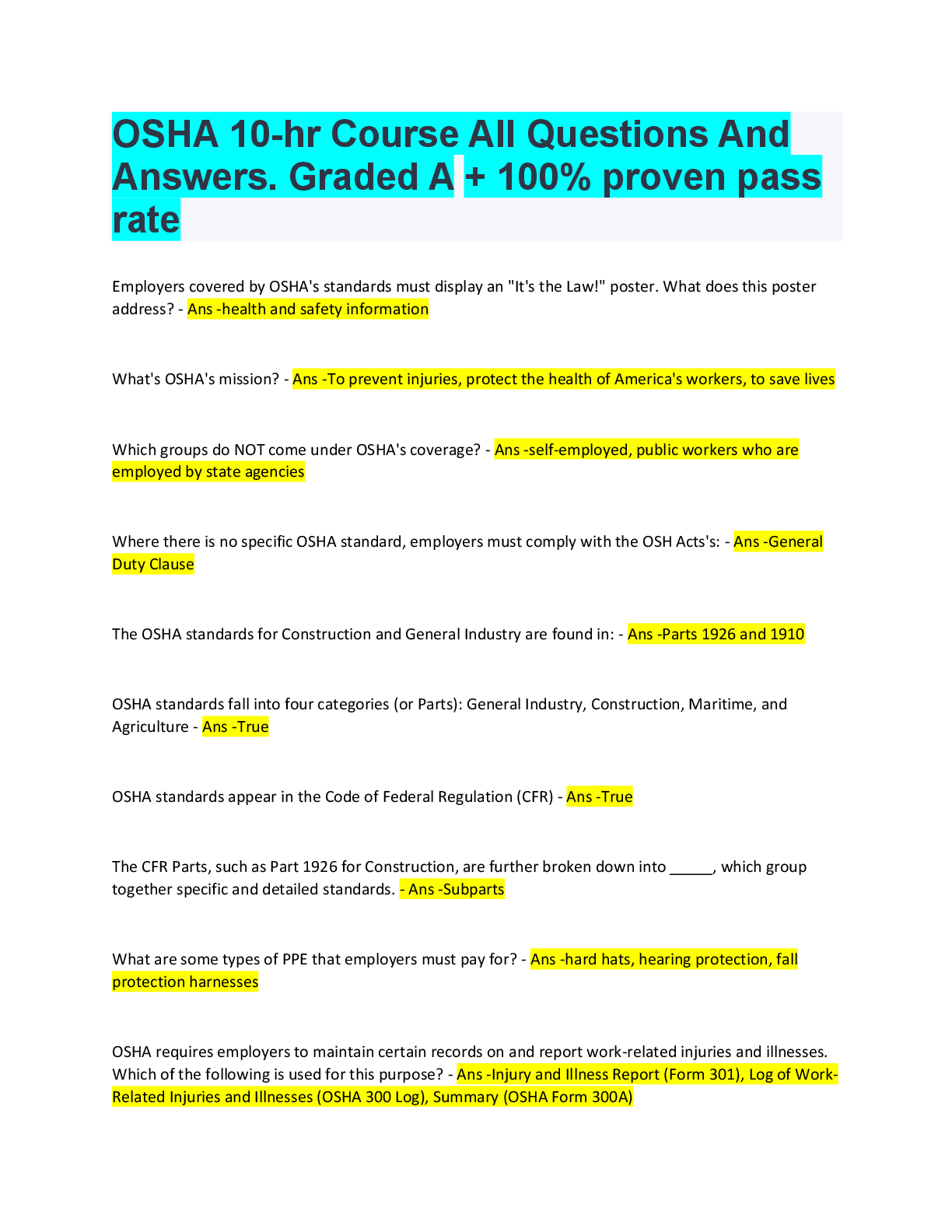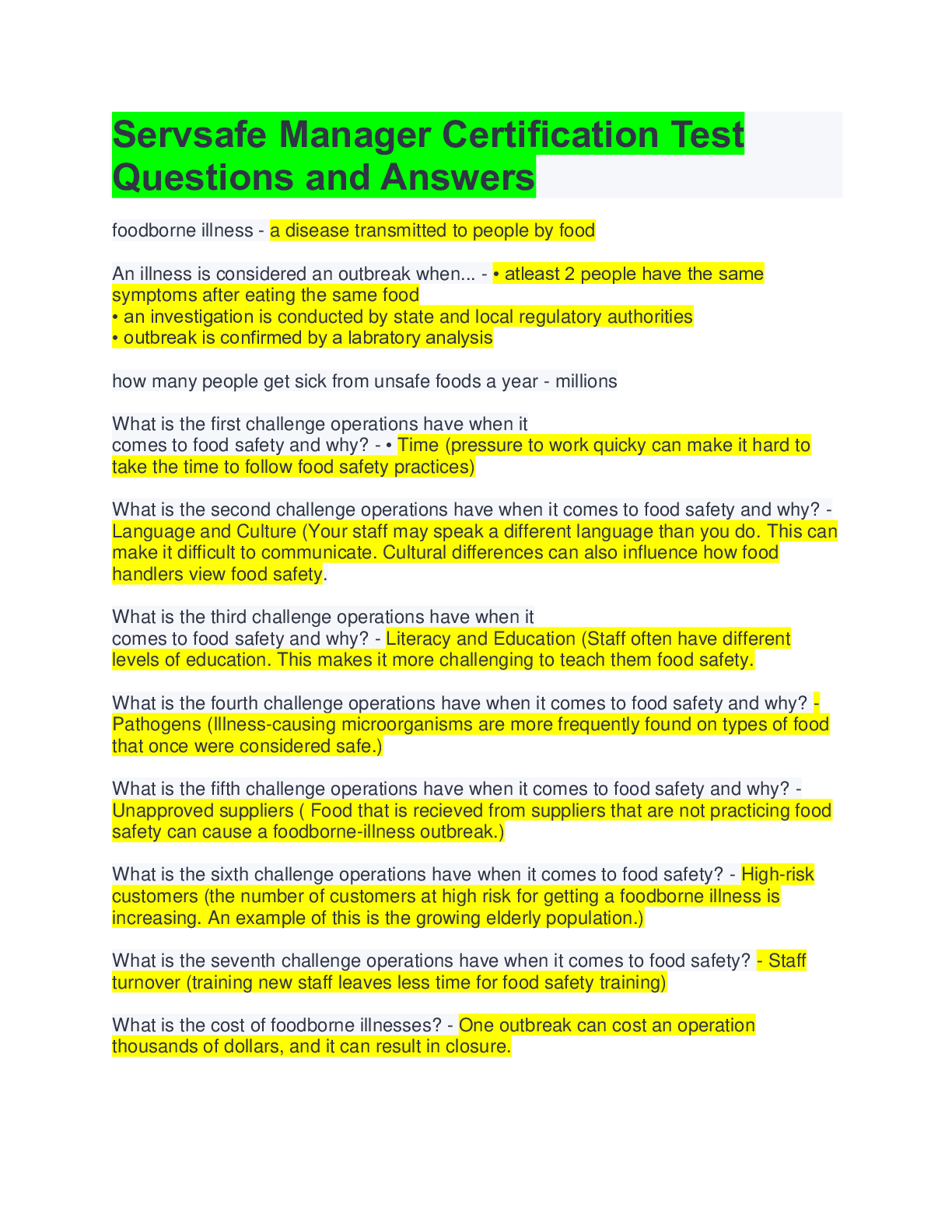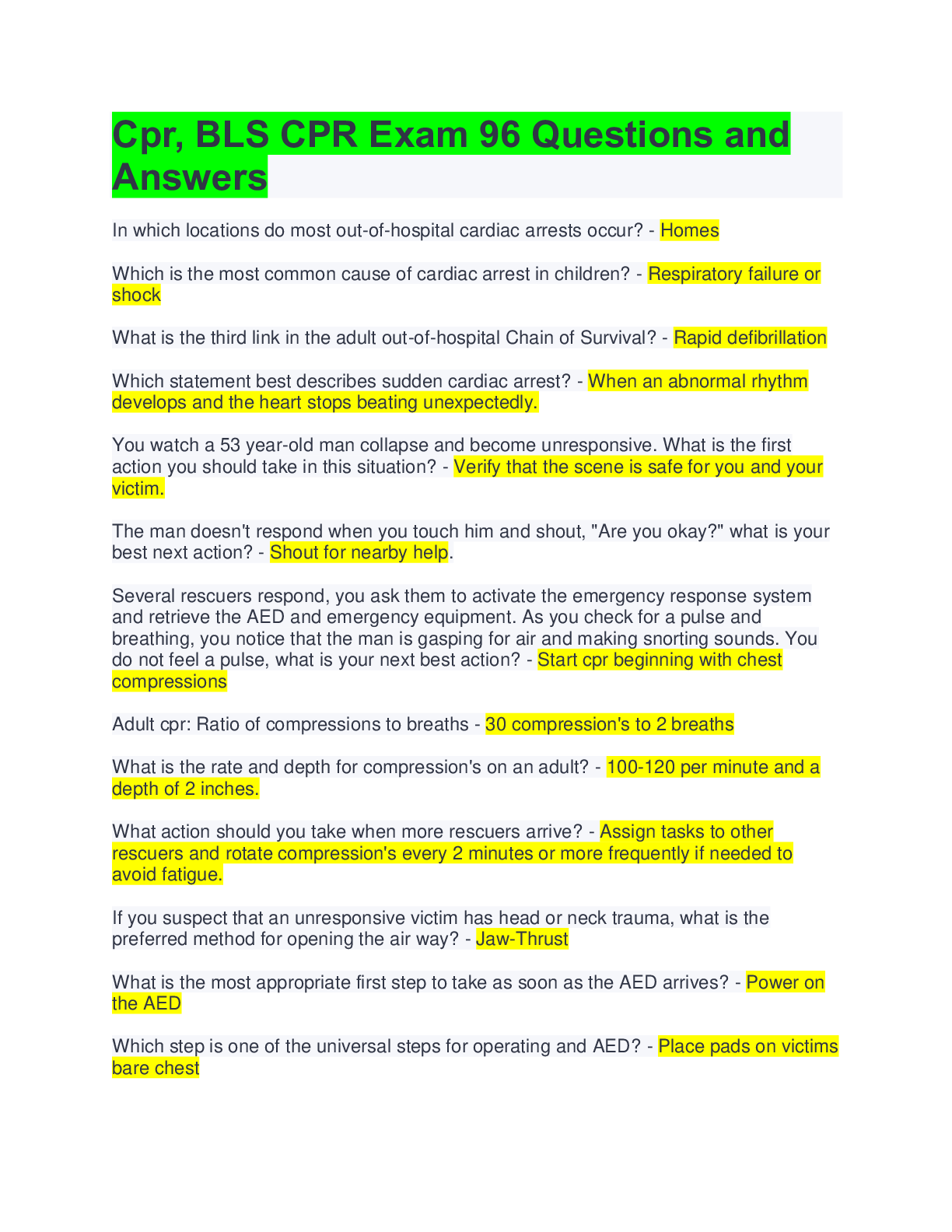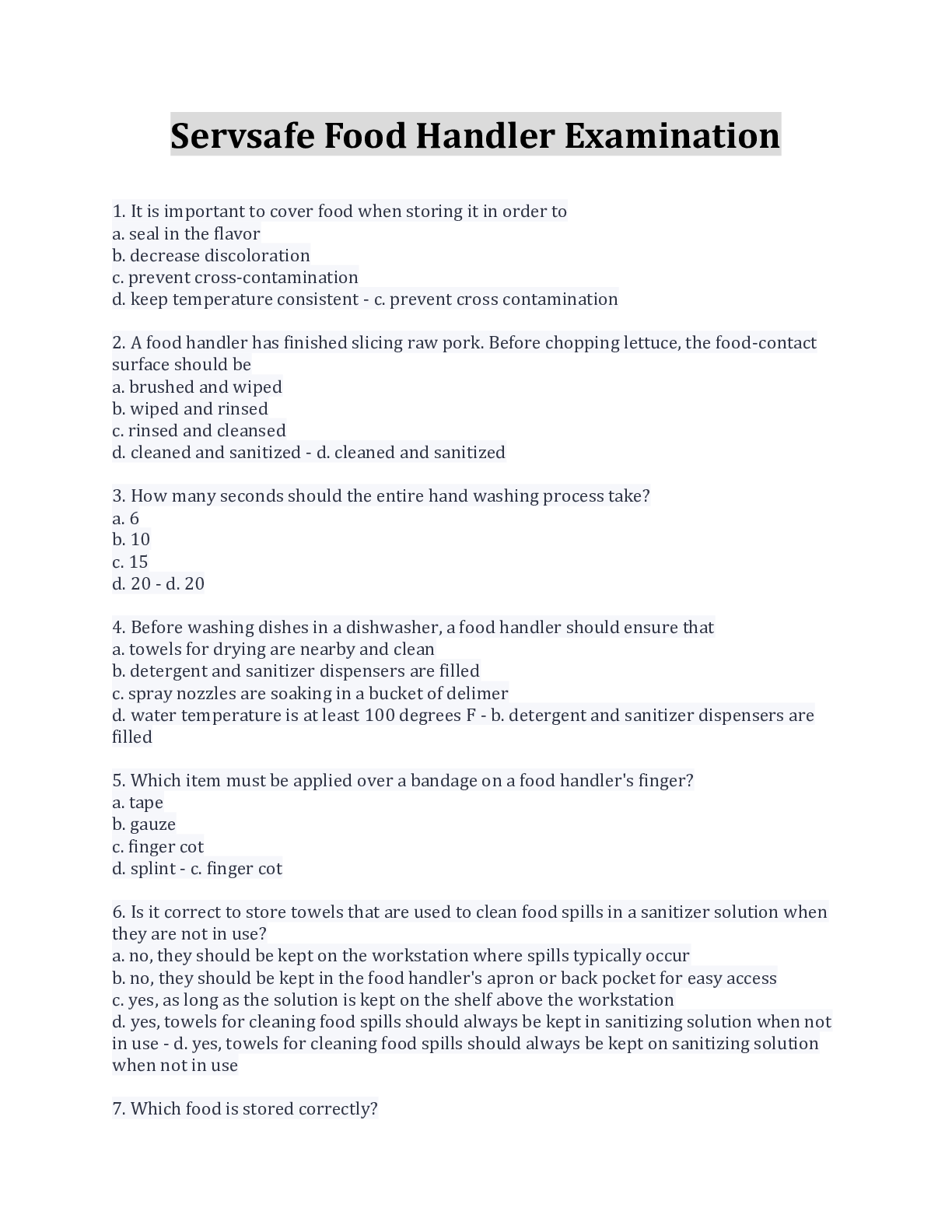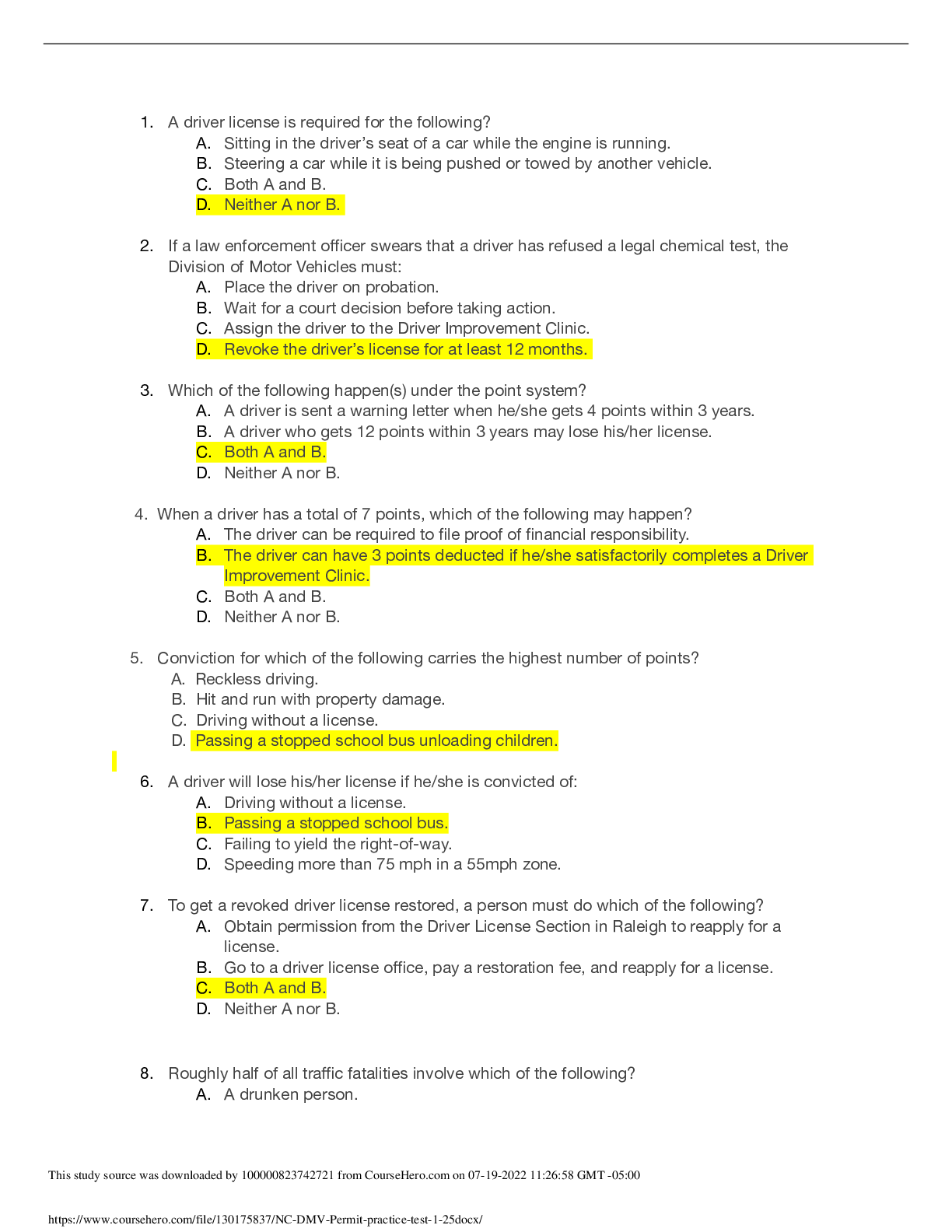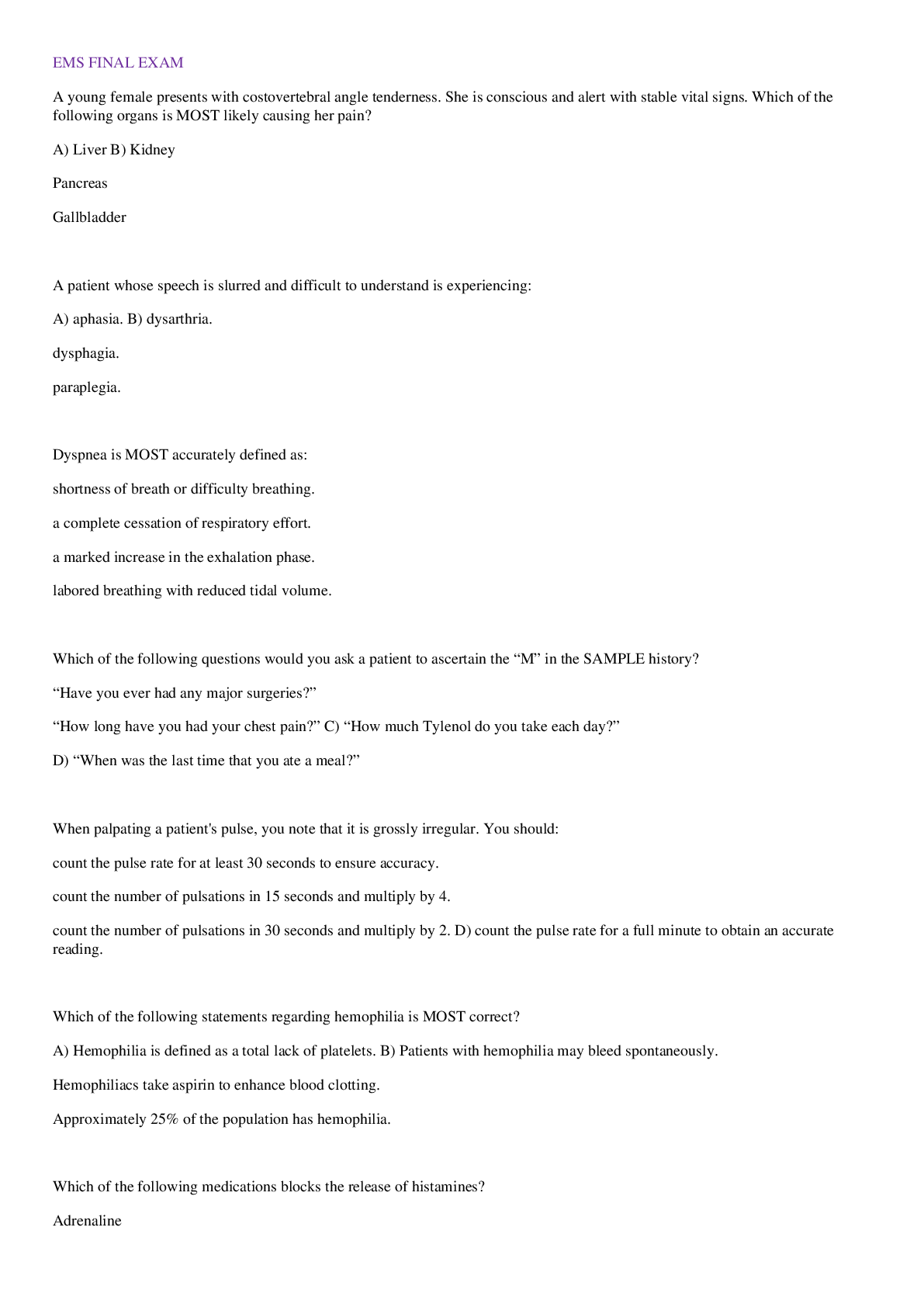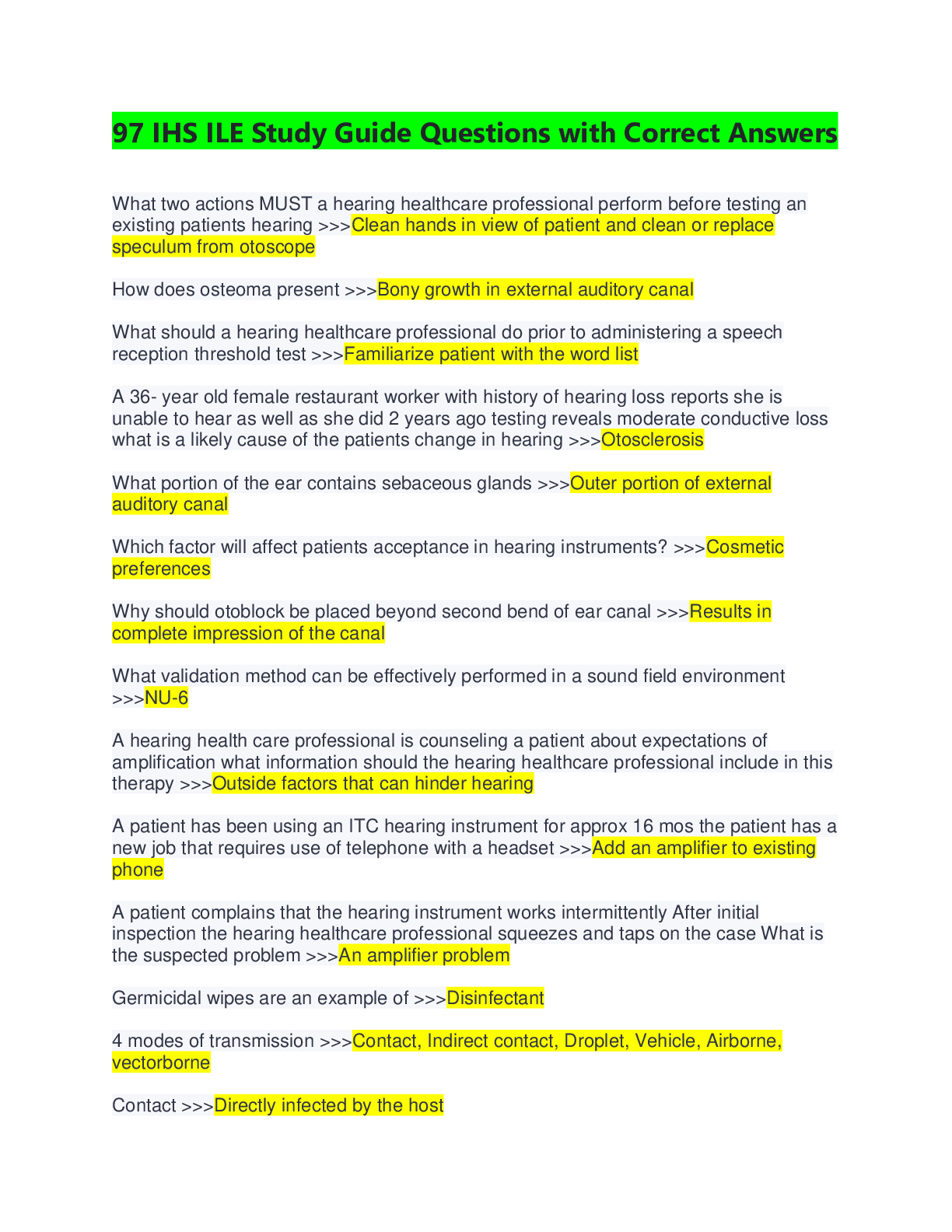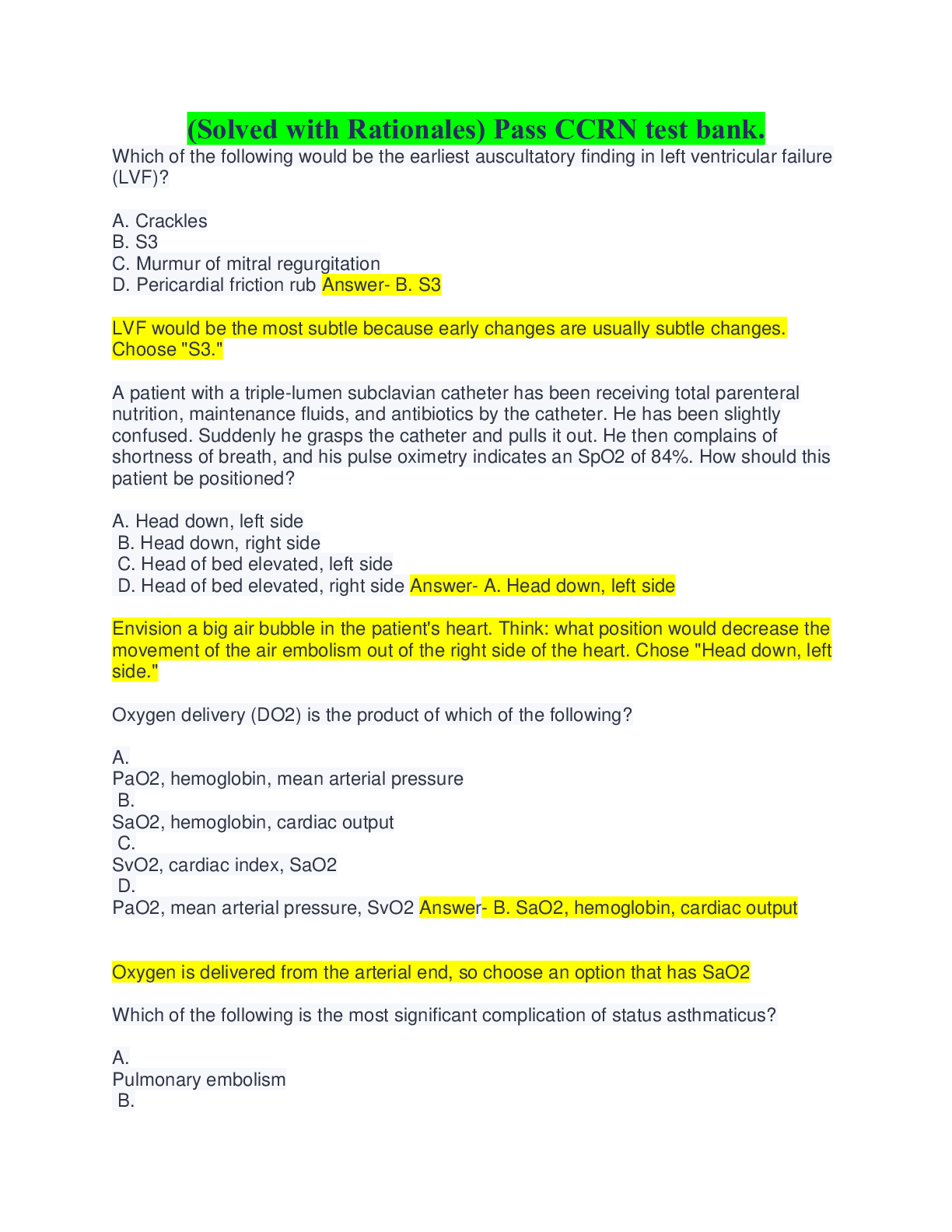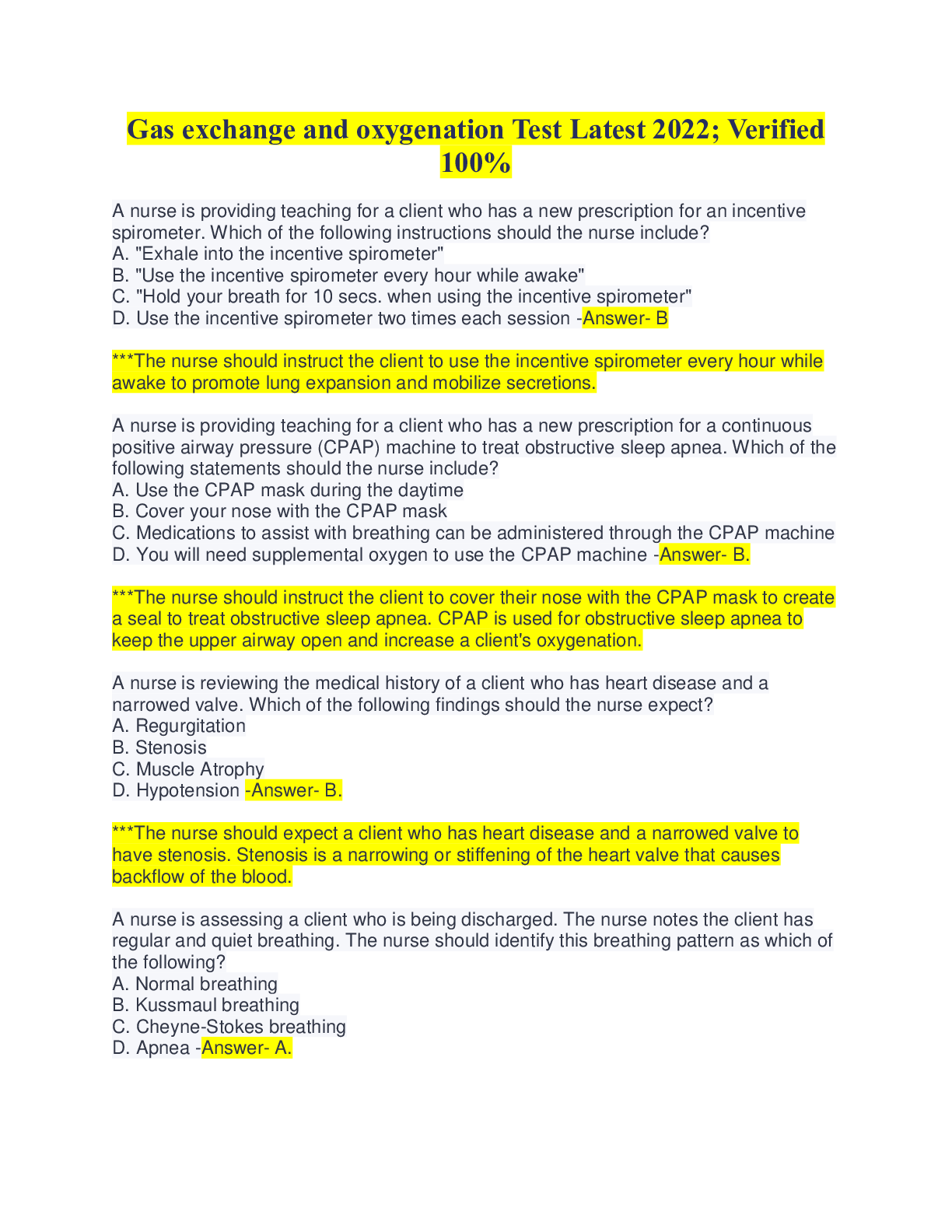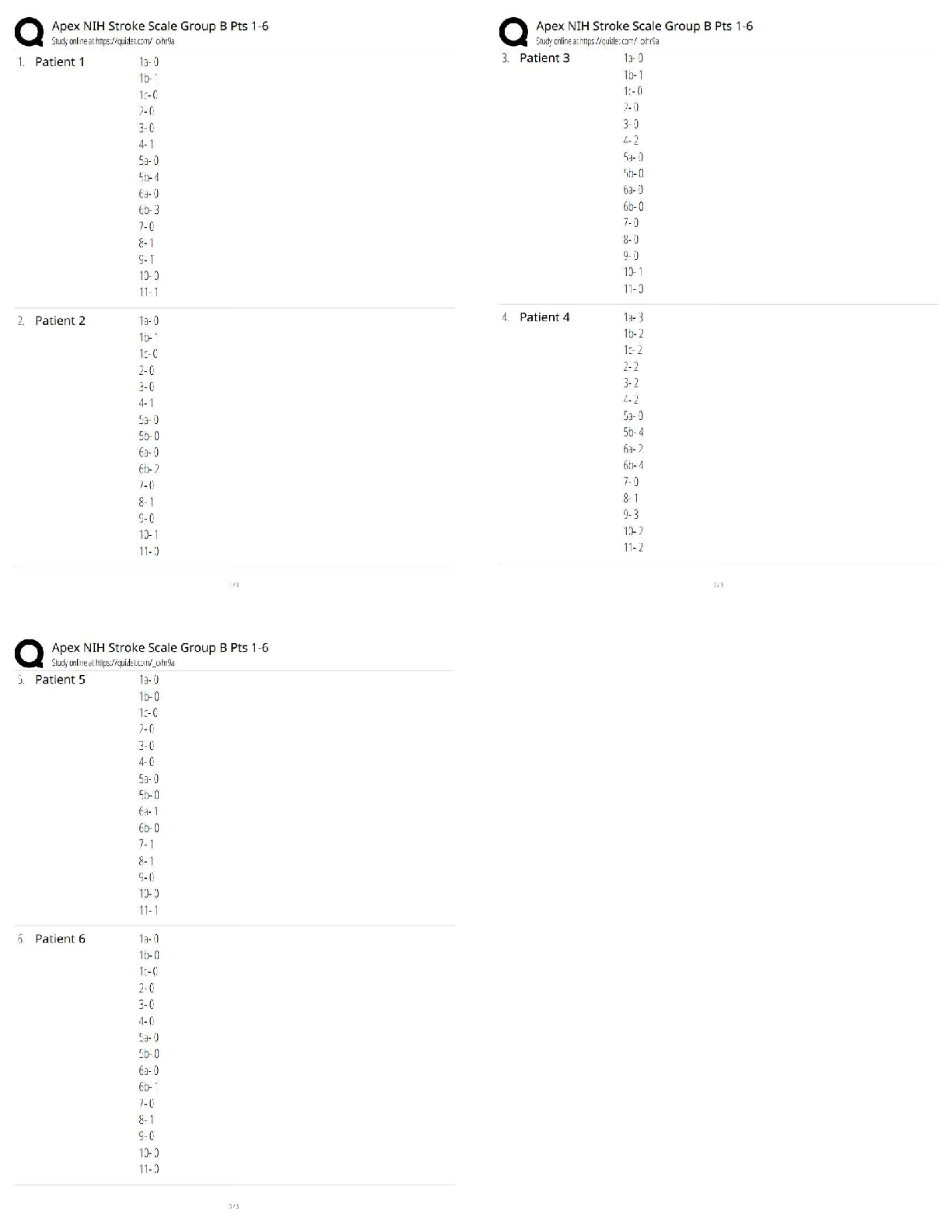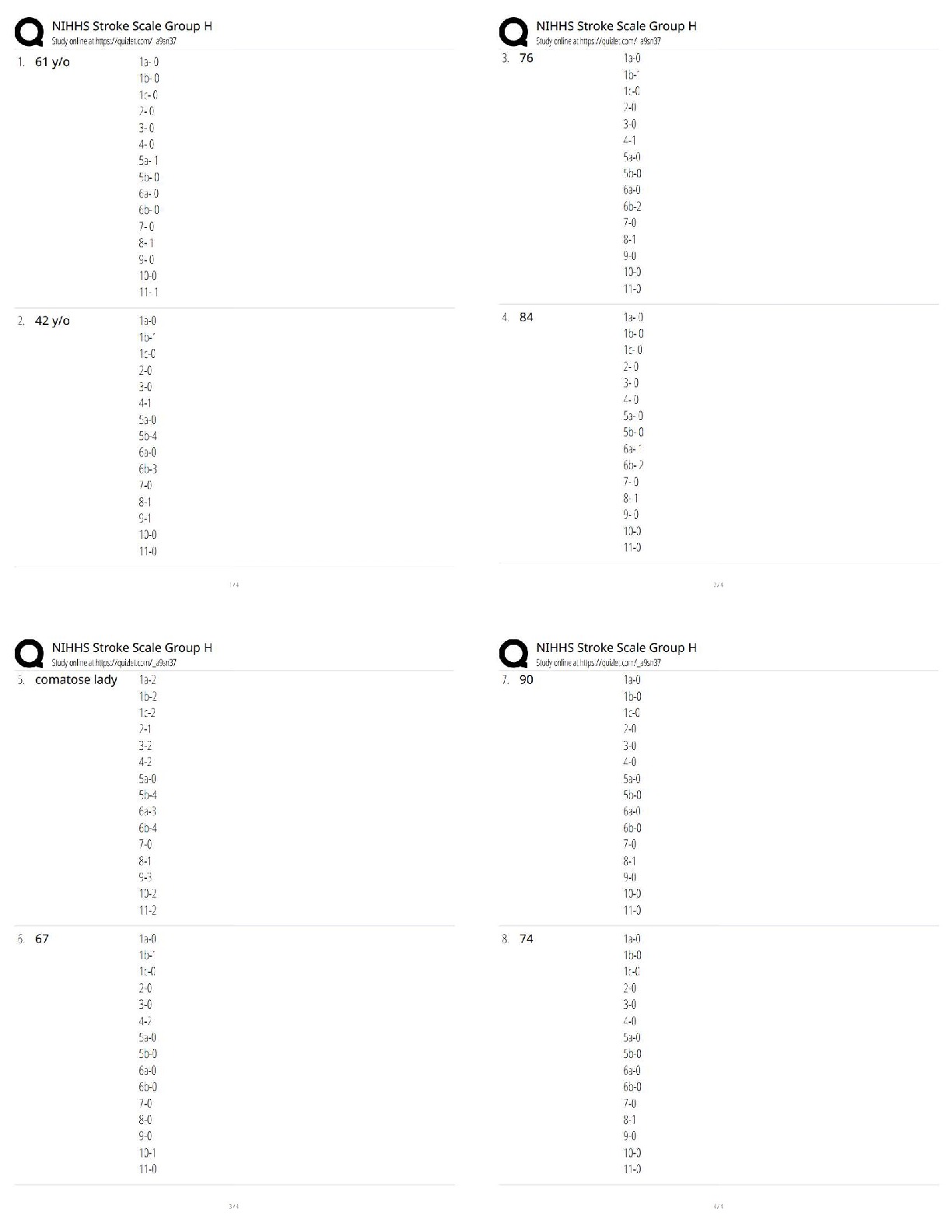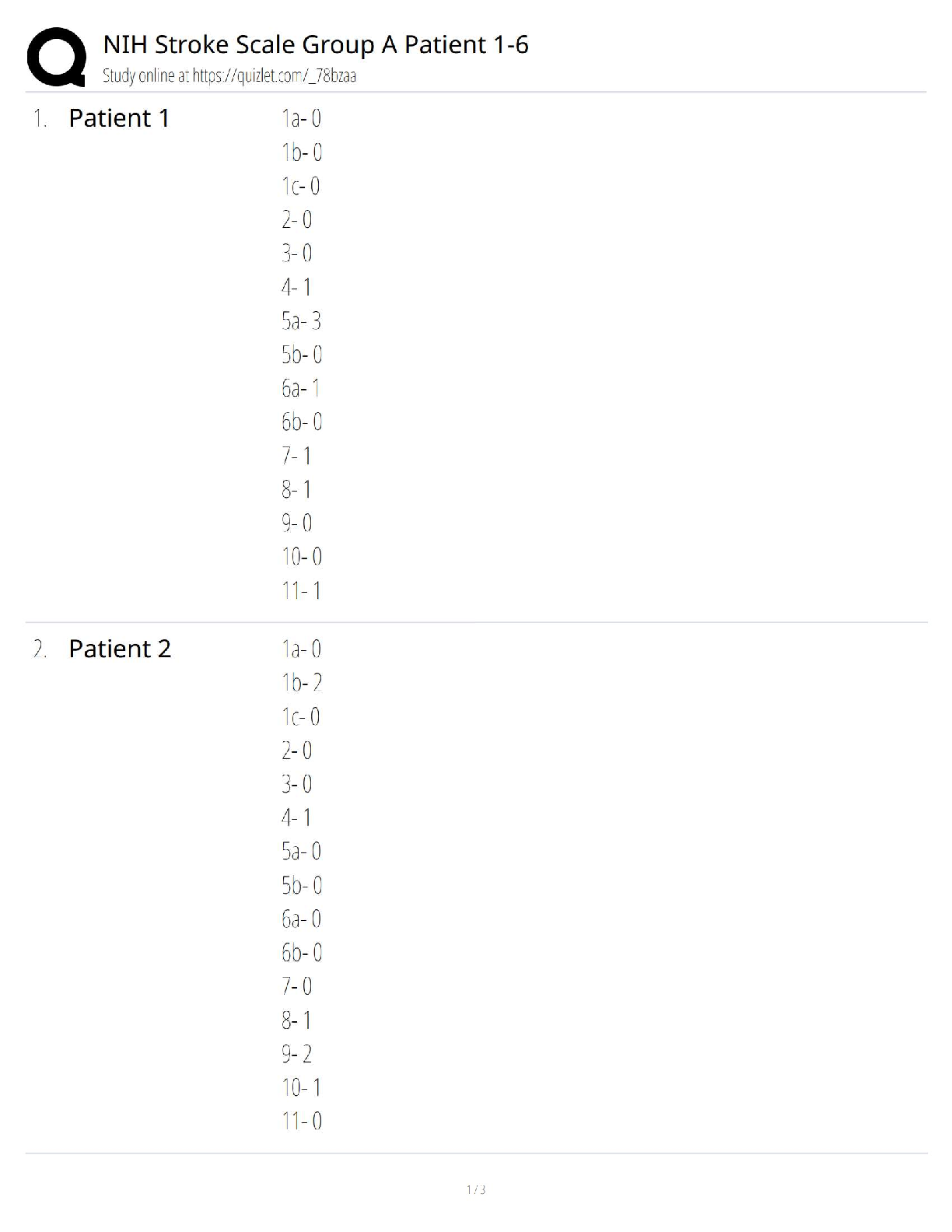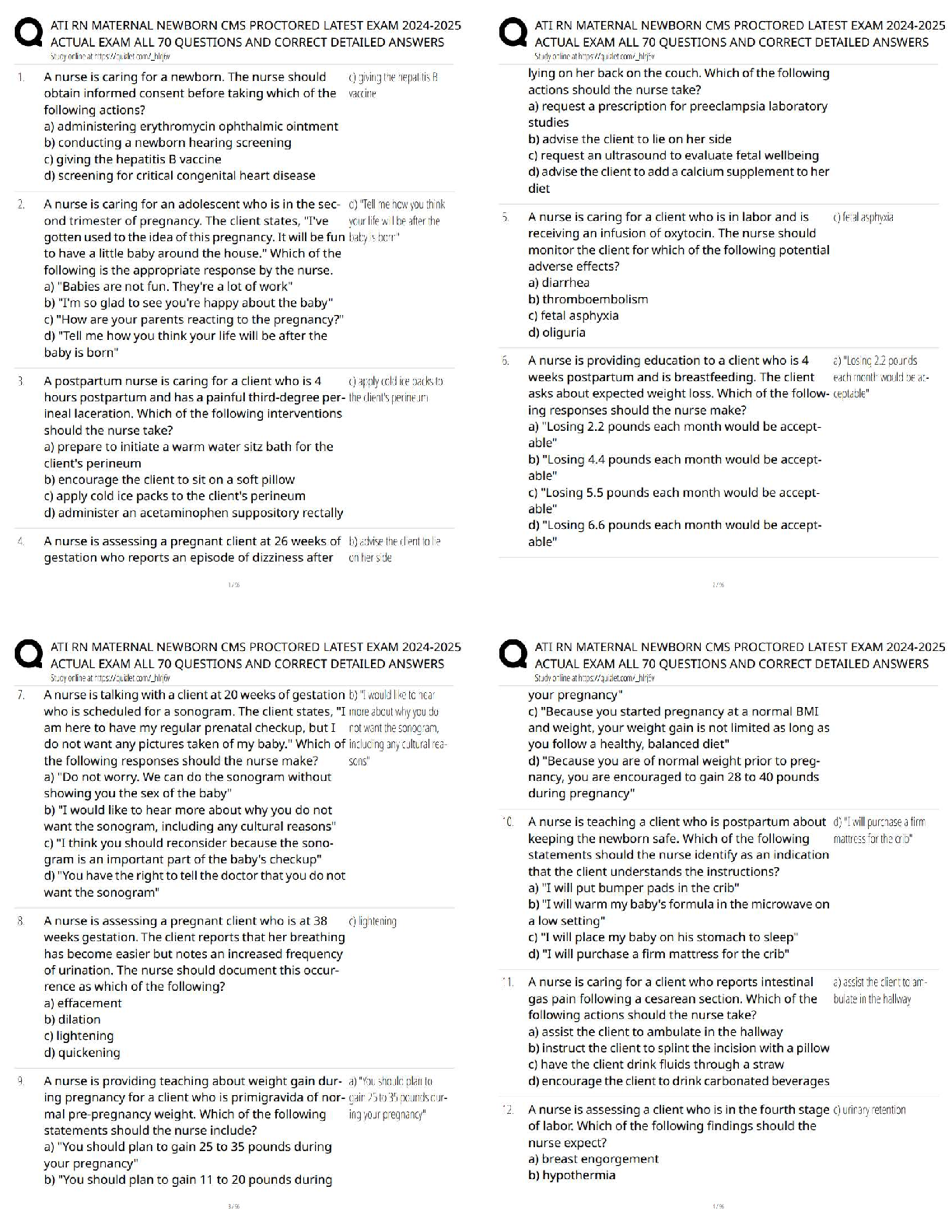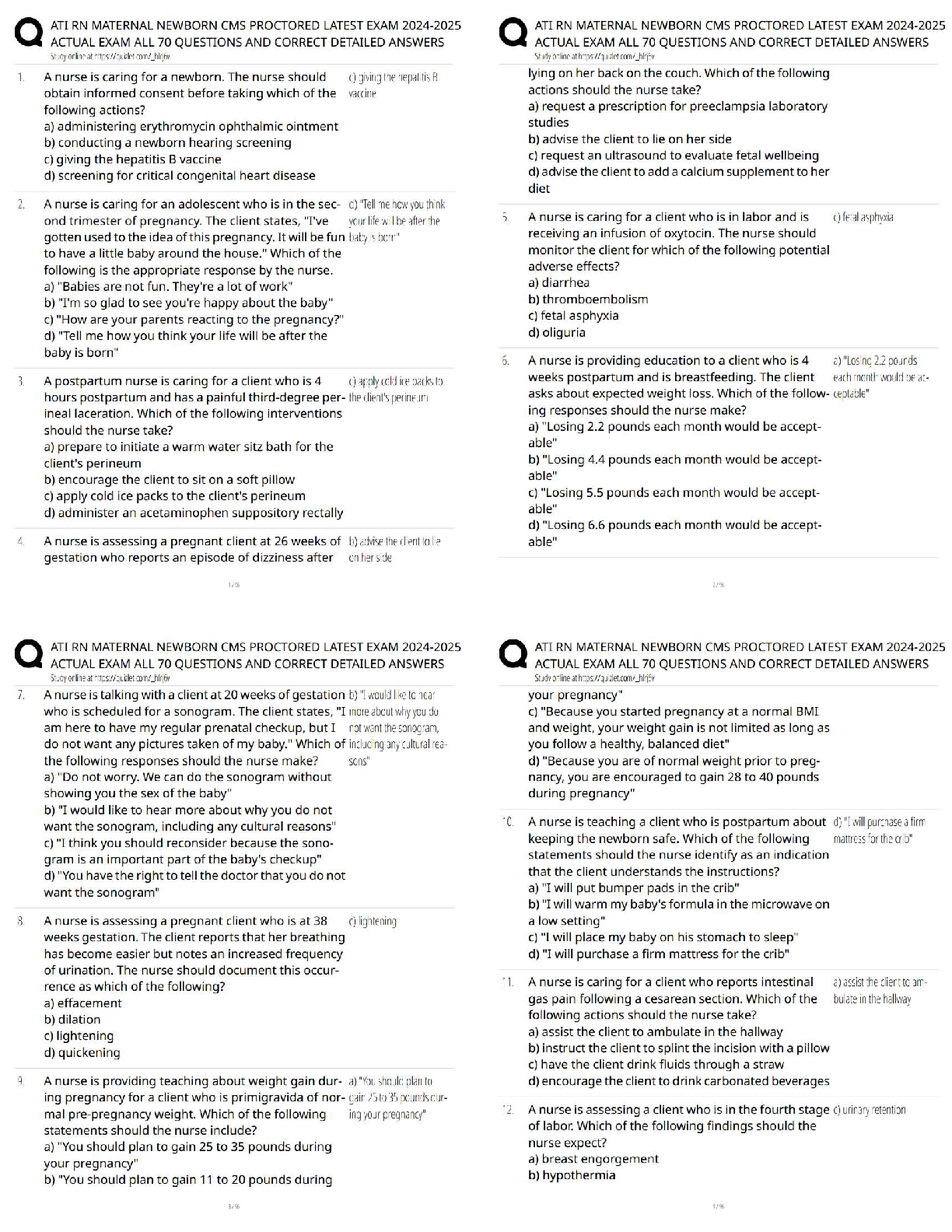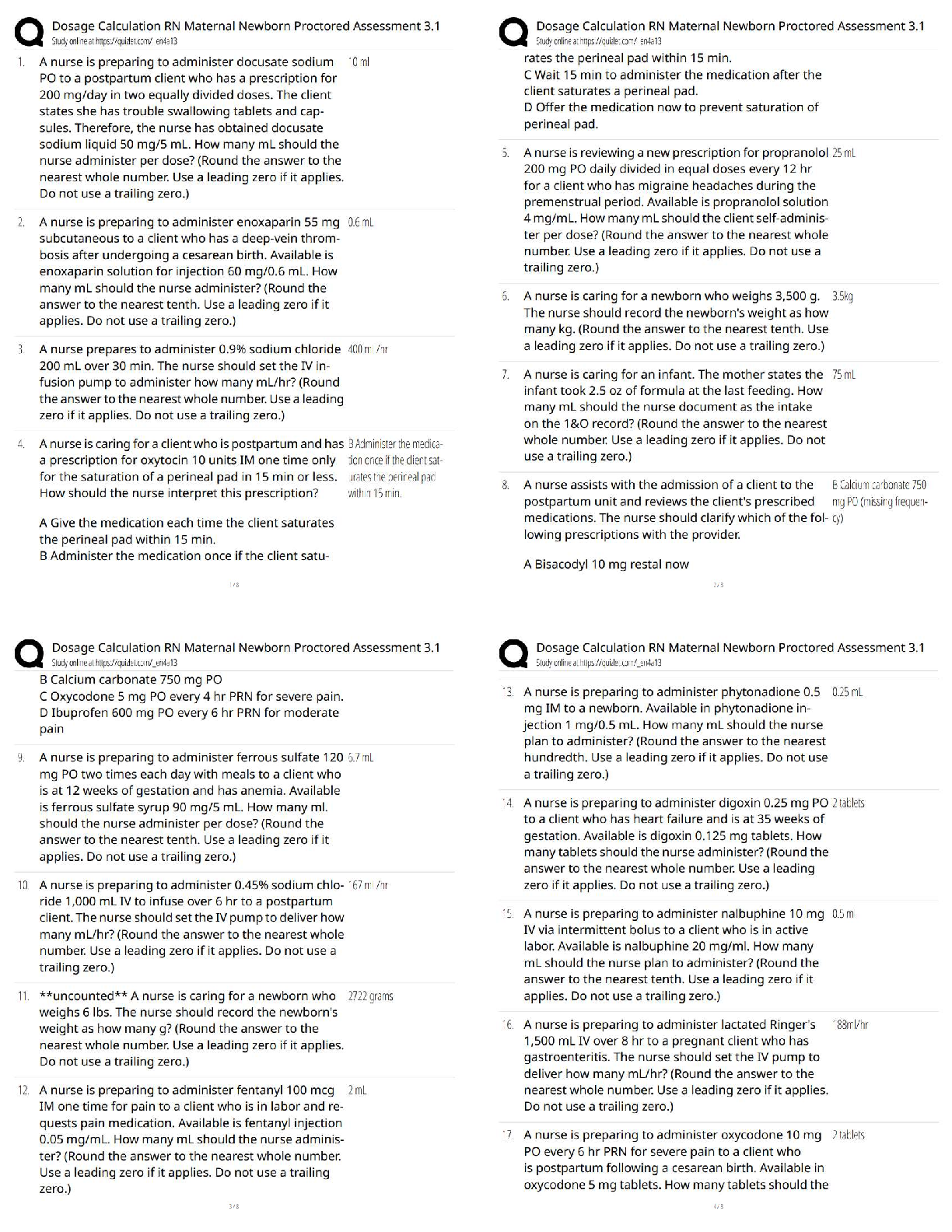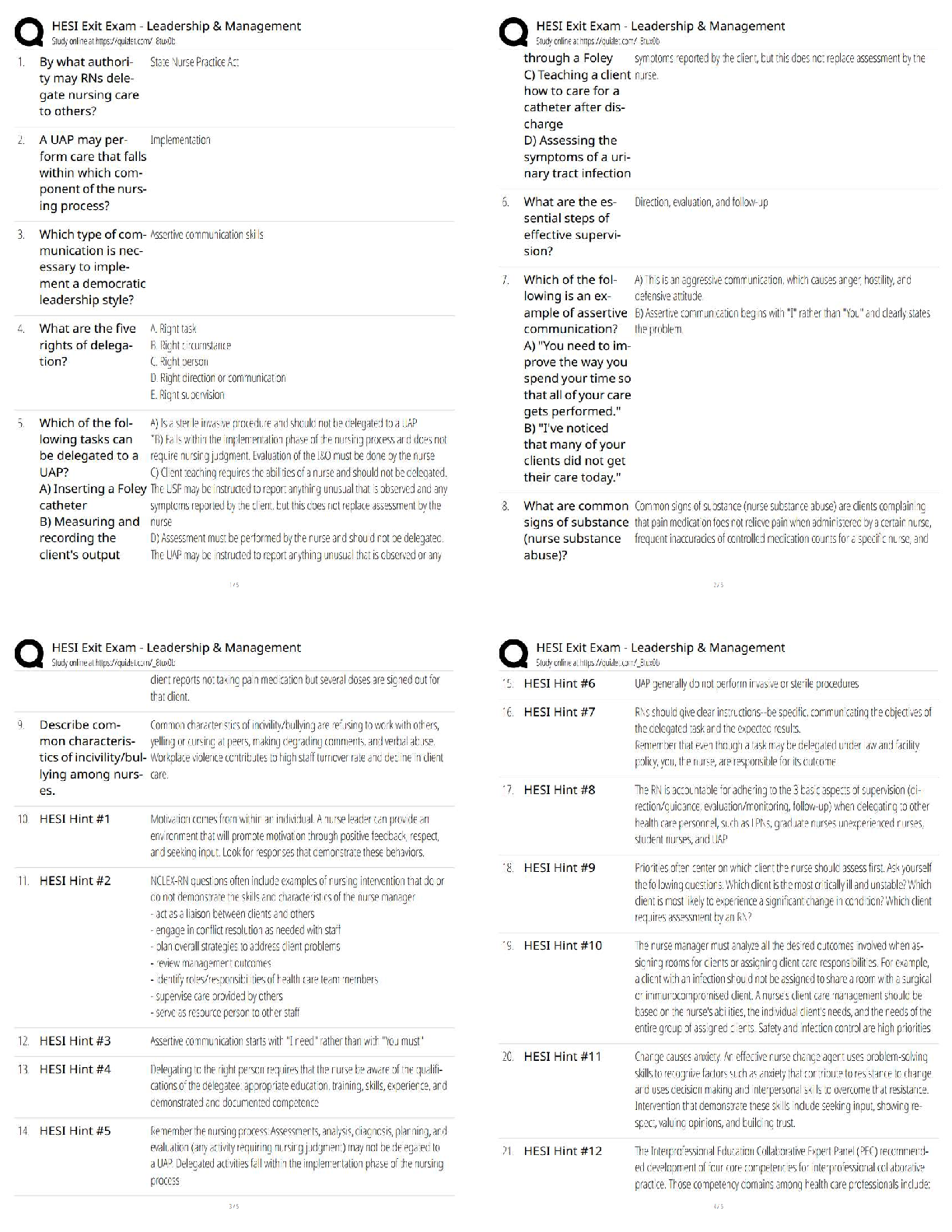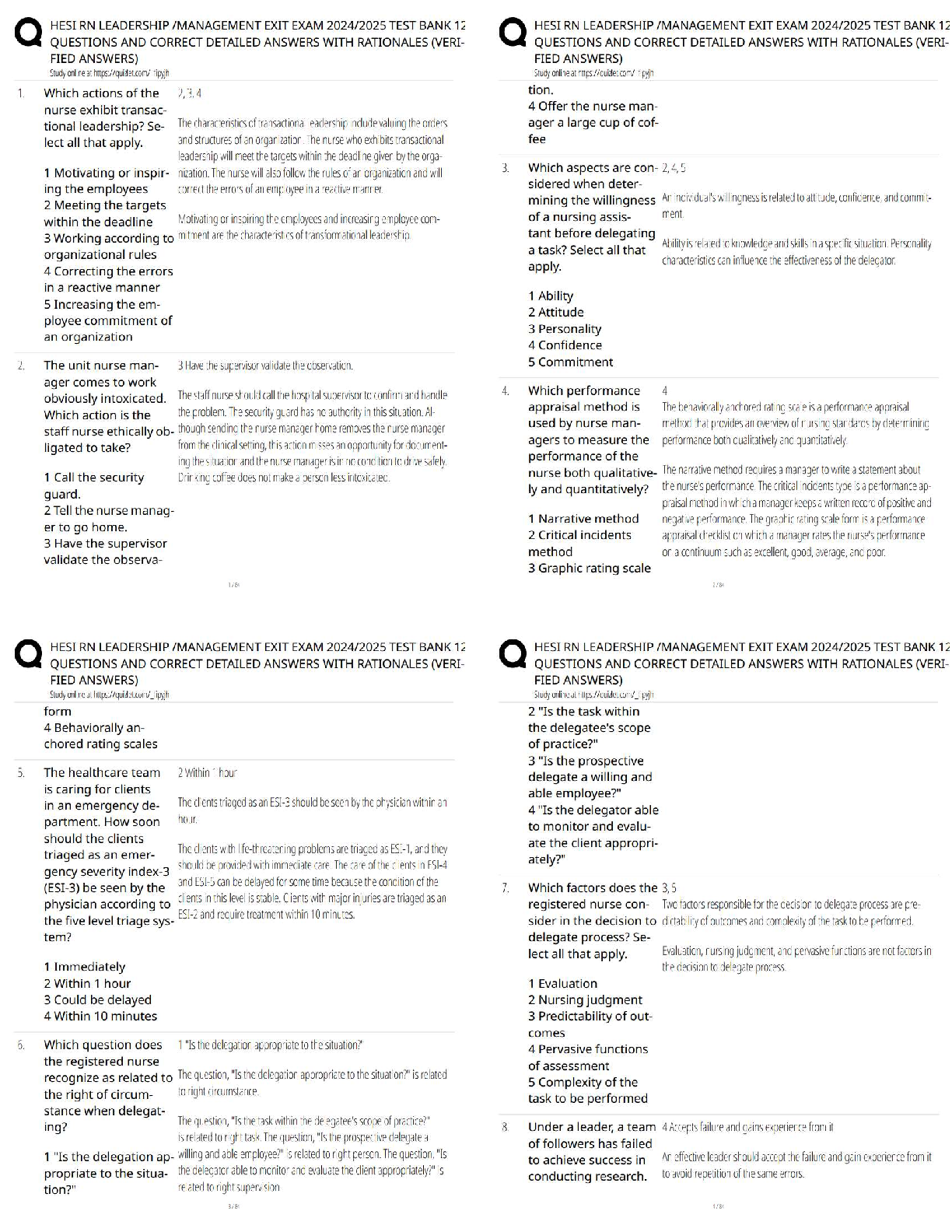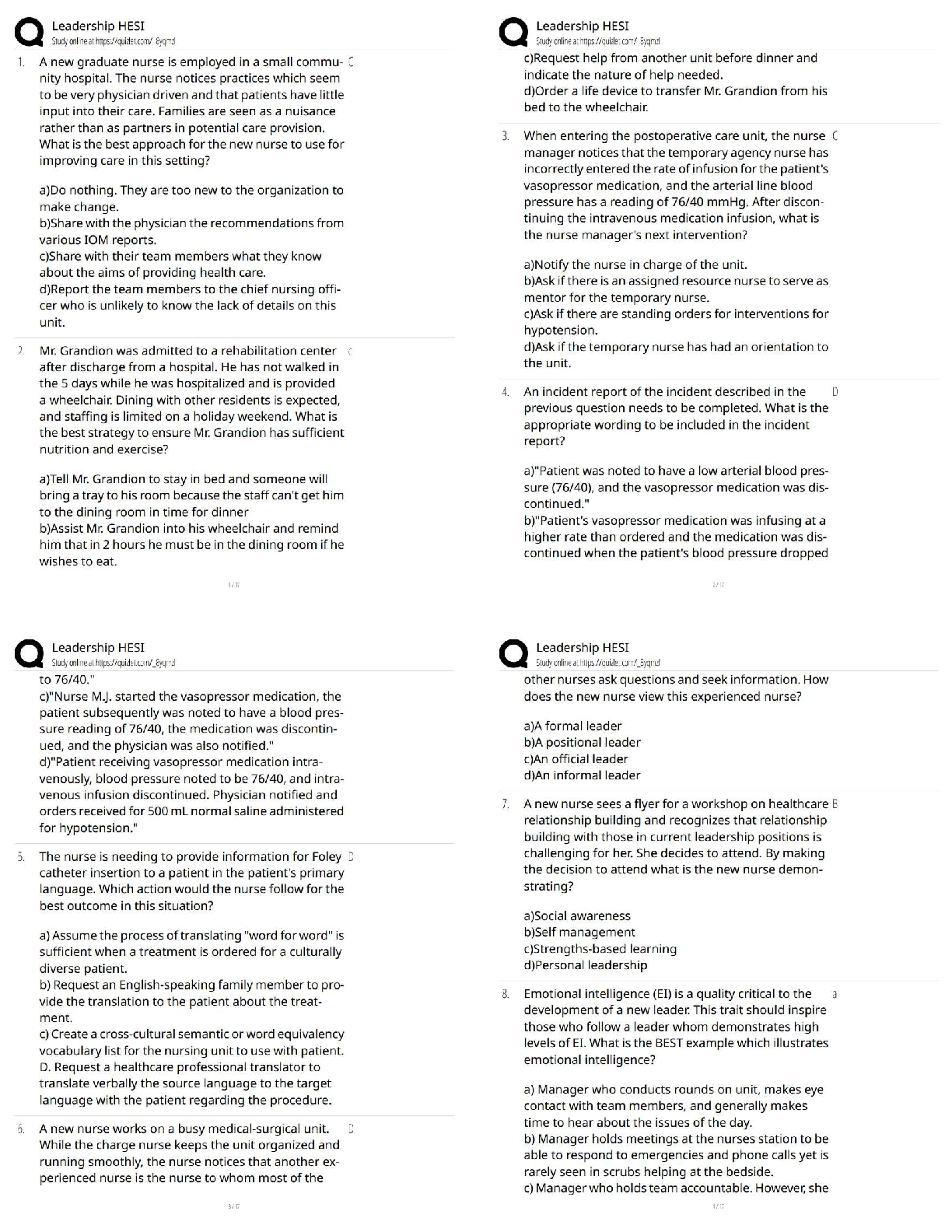*NURSING > QUESTIONS & ANSWERS > RRT EXAM 2022 | Questions and answers (with complete solution) (All)
RRT EXAM 2022 | Questions and answers (with complete solution)
Document Content and Description Below
RRT EXAM 2022 (A Graded) Questions and answers (with complete solution) What are the four critical life functions? - 1. ventilation 2.oxygenation 3. circulation 4. perfusion Which of these life ... functions is the first priority? - getting oxygen---> VENTILATION What assessments would determine how well a patient is ventilating? - Visual assessnt How would the therapist determine if a patient has a problem with oxygenation? - 1. color 2. sensorium 3. heart rate What information would help the therapist determine if a patient's circulation is adequate? - 1. pulse 2. heart rate What changes would indicate that a patient may not have adequate perfusion? - 1. B/P 2 sensorium 3. Temp Explain the differnece between "signs" and "symptoms" and list an example of each. - 1. Signs: Objective, what you see and measure. 2. Symptoms: Subjective, what patient says. List the 8 items that are important to examine when reviewing a patient's chart. - 1. Adm Notes 2. Occupation 3. Smoking Hx 4. Allergies 5. Signs and symptoms 6. Prior surgery 7. Vital signs 8. Physical exam of chest Define an advance directive - Notary sign document authorizing someone to make decision of treatment. List the three types of advance directives. - 1. DNI/DNR 2. Living will 3. Power of Attorney for Health CareA properly written order for respiratory care should include what four factors? - 1. Medication 2. Dose 3. Time (frequency) 4. Doctor signiture The respiratory therapist has just finished administering an aerosol treatment with albuterol to a child whit asthma. How should the treatment be charted? - 1. Date 2. Time 3. Dosage 4. Vital sign before and after treatment What is the normal value for urine output? - 40 mL/hr What findings might indicate that the patient's fluid intake has exceeded his urine output? - 1. Weight gain 2. Electrolyte imbalance 3. Increase hemodynamic pressures 4. Decrease lung compliance Changes in what reading can indicate hydrovolemia? - Increase CVP >6mmHg Patient interview/history: Define the following terms: - 1. Semi-comatose: responds only to painful stimuli 2. Lethargy/somnolence: consider COPD O2 overdose or sleep apnea 3. Obtunded: drowsy state, may have decreased cough , gag reflex, aspiration risk. When assessing a patient's orientation to time, place and person, what are some of the factors that could affect the patient's ability to cooperate? - 1. Language difficulties 2. Influence of medications 3. Hearing loss 4. Fear, apprehension, depression, etc Define Activities of Daily Living (ADL) - the basic tasks of everyday life List six criteria that Activities of Daily Living are based upon, - 1. Bathing 2. Eating 3. Dressing 4. Toilet use 5. Transferring 6. Urine and bowel continence [Show More]
Last updated: 1 year ago
Preview 3 out of 12 pages

Loading document previews ...
Buy this document to get the full access instantly
Instant Download Access after purchase
Buy NowInstant download
We Accept:

Also available in bundle (1)
Click Below to Access Bundle(s)
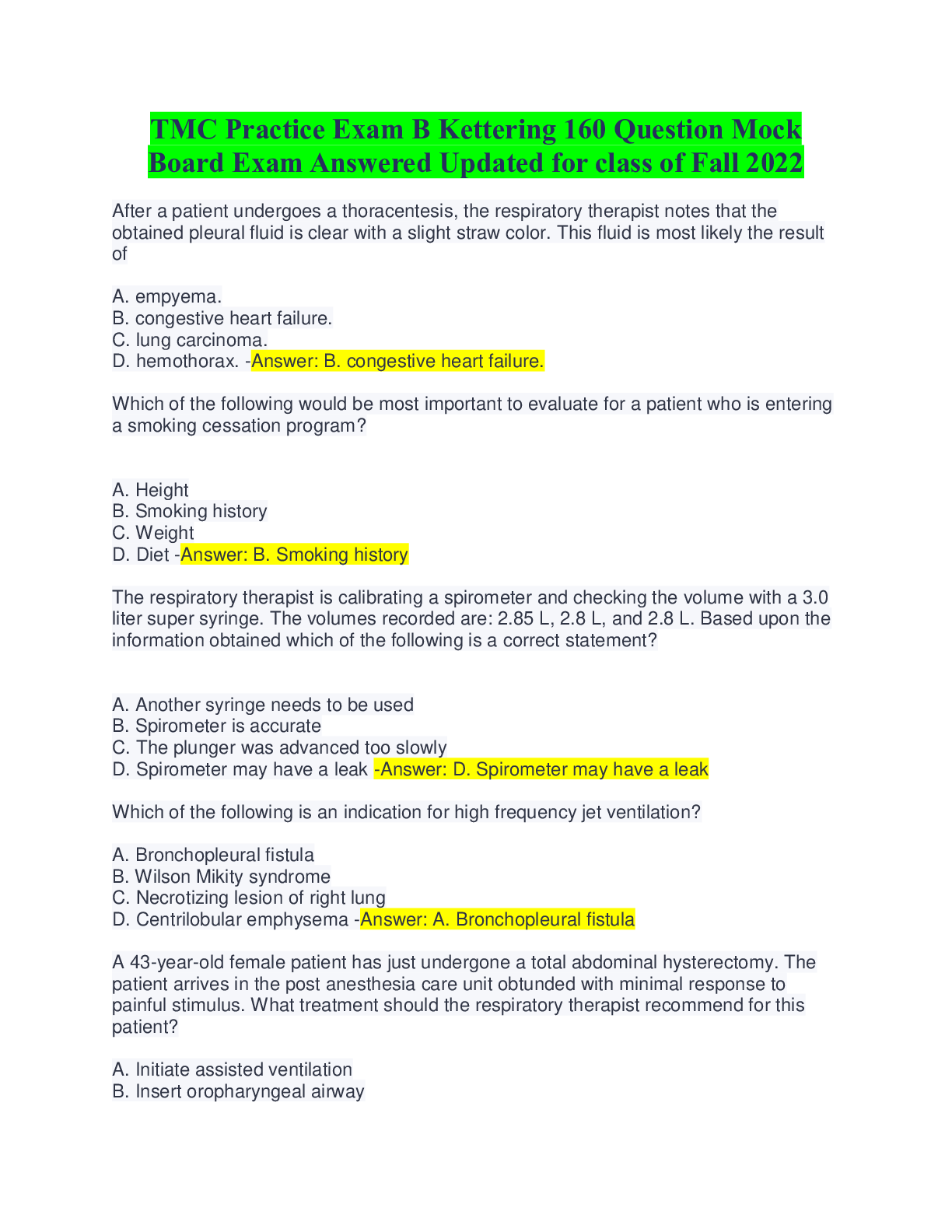
TMC Practice Exam B Kettering 160 Question Mock Board Exam , TMC Practice Exam A and B, TMC practice exam, NBRC Mock TMC, 188 NBRC TMC Review Exam, TMC Mechanical Ventilation, FULL EXAM REVIEW CRT/RRT (NBRC), RRT EXAM , (A Graded) Questions and answers (with complete solution)
TMC Practice Exam B Kettering 160 Question Mock Board Exam Answered Updated for class of Fall 2022 TMC Practice Exam A Updated 2022 (Graded A+) TMC practice exam Updated 2022 (Graded A+) TMC...
By Professor Lynne 3 years ago
$16
10
Reviews( 0 )
$9.00
Can't find what you want? Try our AI powered Search
Document information
Connected school, study & course
About the document
Uploaded On
Aug 09, 2022
Number of pages
12
Written in
All
Additional information
This document has been written for:
Uploaded
Aug 09, 2022
Downloads
0
Views
174

